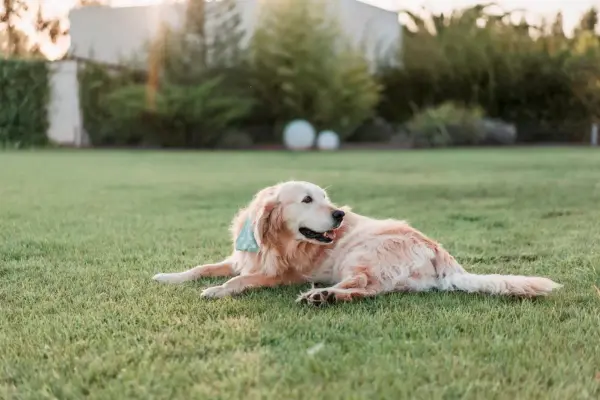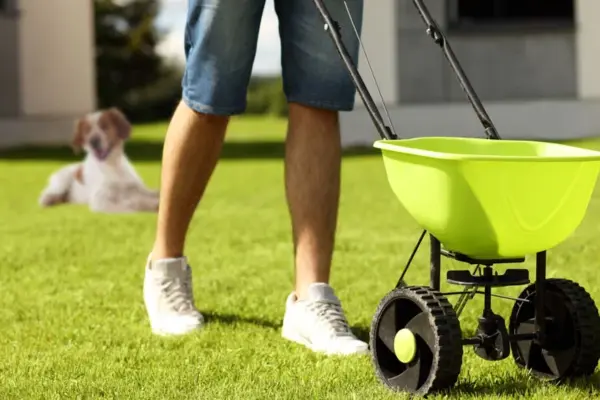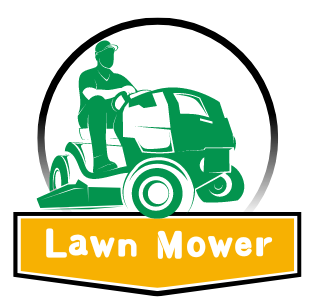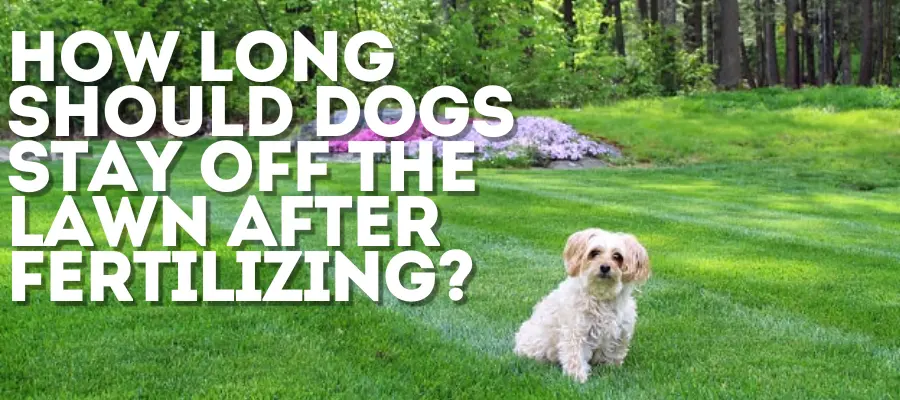Fertilizing your lawn is a critical step in achieving a lush, green, and healthy yard. Yet, if you have a four-legged family member who loves to run and play outside, you might be concerned about their safety after you’ve applied fertilizer.
The question isn’t just about how to maintain a beautiful lawn but also how to ensure that your pet remains safe.
In this article, we will explore How Long Should Dogs Stay Off the Lawn After Fertilizing, delve into the types of fertilizers, and provide comprehensive safety guidelines.
Why Lawn Fertilizers Can Be Harmful to Dogs

Fertilizers, while beneficial for your lawn, can pose risks to your pets:
Chemical Exposure: Synthetic fertilizers often contain chemicals that can be toxic to dogs if ingested or if they come into contact with their skin. Symptoms of poisoning can include vomiting, diarrhea, and lethargy.
Ingestion Risks: Dogs, especially those who love to munch on grass, may accidentally ingest fertilizer particles. This can lead to gastrointestinal distress or, in severe cases, poisoning.
Skin Irritation: Direct contact with fertilizers can cause skin irritations or rashes in dogs. This is particularly true for pets with sensitive skin or allergies.
Pro Tip: Always read the safety instructions on fertilizer labels and consider opting for pet-friendly, organic options to minimize risks.
How Long Should Dogs Stay Off the Lawn After Fertilizing?
General Guidelines for Keeping Dogs Off the Lawn
Keeping your dog off the lawn after fertilizing is crucial for their safety. The recommended time varies based on the type of fertilizer used:
Granular Fertilizers: Generally, you should keep your dog off the lawn for at least 24 to 48 hours. This waiting period allows the granules to fully dissolve into the soil, reducing the risk of ingestion and minimizing chemical exposure.
Liquid Fertilizers: These fertilizers are absorbed more quickly, so a 24-hour wait is usually sufficient. This timeframe allows the liquid to be absorbed into the grass and soil, making it safer for pets.
Organic Fertilizers: Although these are generally safer, it’s still wise to keep pets off the lawn for at least 24 hours to ensure the product is fully absorbed and any potential residue has been washed away.
Factors Affecting Wait Time
Several factors can influence how long your dog should stay off the lawn:
Weather Conditions: Rain can help dissolve and wash away fertilizer more quickly. If a heavy rainstorm follows fertilization, it might be safer to let your dog back onto the lawn sooner.
Type of Grass: Different grass types absorb fertilizers at different rates. For instance, Bermuda grass, which grows quickly, might process fertilizer faster than Kentucky bluegrass.
Fertilizer Brand: Different brands have varying formulations and safety guidelines. Always refer to the specific product’s label for the most accurate information.
Specific Time Frames for Popular Fertilizers
To make things easier, here’s a reference table for some well-known fertilizer brands, including their recommended wait times:
| Fertilizer Brand | Type | Recommended Time Off Lawn |
|---|---|---|
| Scotts Turf Builder | Granular | 24-48 hours |
| Miracle-Gro | Liquid | 24 hours |
| Espoma Organic | Organic | 24 hours |
| Lesco Starter | Granular | 48 hours |
| GreenView Fairway Formula | Granular | 24 hours |
Additional Tips for Lawn Care and Pet Safety

Alternative Lawn Care Practices
Use Pet-Friendly Fertilizers: Consider using fertilizers specifically labeled as pet-friendly. These often use natural ingredients and are less likely to cause harm if ingested.
Apply Fertilizer Wisely: Use slow-release fertilizers to minimize the frequency of application and reduce the risk of chemical exposure.
Water Your Lawn: After applying fertilizer, water your lawn thoroughly. This helps the fertilizer dissolve and reduces the risk of residue left on the grass.
Observing Your Pet’s Behavior
Monitor for Symptoms: If your dog has had access to the lawn before the recommended waiting period has passed, watch for signs of discomfort or illness, such as vomiting or diarrhea.
Consult a Vet: If you suspect your pet has ingested fertilizer or is showing unusual symptoms, contact your veterinarian immediately for advice and treatment.
Safe Lawn Practices for Pet Owners
Create a Play Area: Consider creating a designated play area for your pet away from recently fertilized zones. This keeps your dog safe while allowing them to enjoy their time outside.
Use Mulch or Decorative Stones: Instead of grass, use mulch or decorative stones in areas where your pet frequently roams. This reduces their exposure to fertilizers and other chemicals.
Conclusion: How Long Should Dogs Stay Off the Lawn After Fertilizing?
Maintaining a beautiful lawn and ensuring the safety of your pet can go hand in hand with the right precautions. Understanding how long dogs should stay off the lawn after fertilizing, considering the type of fertilizer used, and following specific safety guidelines will help you protect both your lawn and your furry friend. By staying informed and cautious, you can enjoy a thriving yard while keeping your pet safe and healthy.

